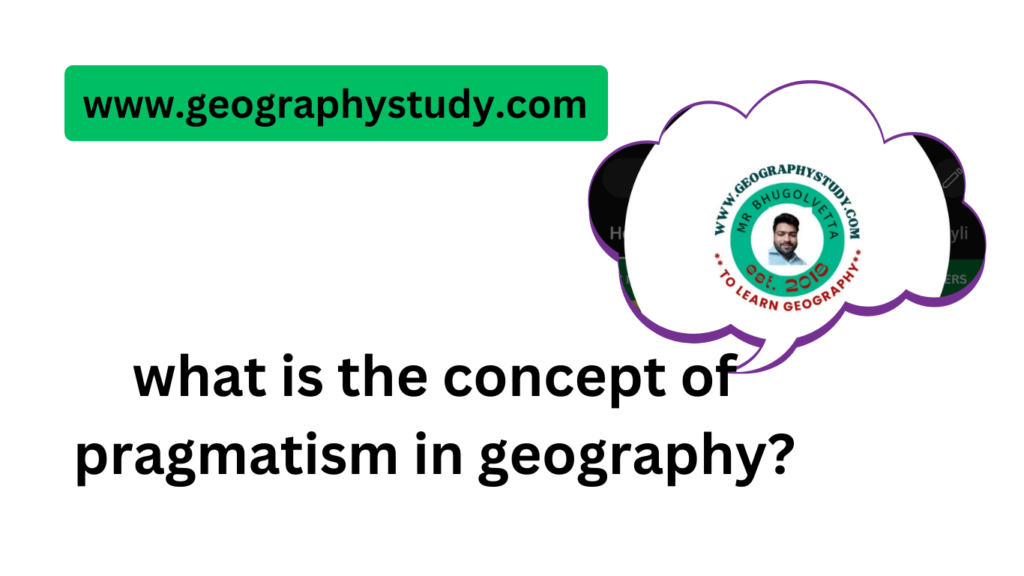Areal differentiation refers to the spatial variation of geographic phenomena across a specific area or region. It involves the study and analysis of how certain characteristics or attributes change across different locations.

What is the concept of areal differentiation?
- The term areal differentiation was coined and used by Hartshorne in his classic work. “The Nature of Geography” was published in 1939.
- Hartshorne’s central claim about geography is its integrative or synthetic purpose.
- The areal differentiation is also known as “chorology” or ‘chorography’.
- Areal differentiation may be termed ‘idiographic as it is concerned with the unique and particular’.
- Areal differentiation helped in the reconstruction of regional geography.
- This concept is fundamental in geography and helps researchers and geographers understand the spatial patterns and variations in physical, human, and environmental phenomena.
- Critics claimed that Hartshorne’s emphasis on ‘distinction’ locked geography into traditionalism. He dismissed the term “integration.” Regions are never completely distinct. Rather, some common elements exist throughout all regions.
Who is Richard Hartshorne?
Richard Hartshorne was a major modern proponent of Areal Differentiation in Geography
What is the history of the concept of areal differentiation?
Areal differentiation represents the oldest tradition of Western geographical inquiry; it was first set forth by Hecataeus of Miletus in the 6th century BC. And codified in the form of chorology by Strabo in the 17th Books of Geography.
Strabo was recommending what could now be called ‘regional geography’ as the core of geographical study.
In the 1980s, areal differentiation was reinstated as a central perspective in human geography.
Areal differentiation was revived in the 1980s for the following reasons:
- Capitalistic concepts include investment areas and labor divisions. It recognized all regions as distinct and criticized spatially homogeneous capitalism.
- Human agency and social structure were influenced by local terrain, and this distinction explains how societies evolved differently.
- Human Geography: Human behaviors are functions of the mental pictures of geographical space that humans have.
Several factors contribute to areal differentiation, and they can be broadly categorized into physical and human factors:
1. Physical Factors:
– Climate:
Different regions experience varying climatic conditions, such as temperature, precipitation, and humidity, leading to distinct ecosystems and landscapes.
– Topography:
The physical features of the land, such as mountains, valleys, plains, and bodies of water, influence the distribution of various phenomena.
– Geology:
The composition and structure of the Earth’s crust affect soil fertility, mineral resources, and landforms.
2. Human Factors:
Population Distribution:
The distribution of human populations across a region influences settlement patterns, urbanization, and economic activities.
Cultural Practices:
Diverse cultural practices and traditions may lead to distinct patterns in architecture, agriculture, and land use.
Economic Activities:
The type of economic activity, such as agriculture, industry, or services, varies spatially based on factors like resources and market access.
3. Spatial Interactions:
– Connectivity:
The degree of connectivity between different places affects the flow of goods, information, and people, leading to spatial variations.
Transportation Networks:
The presence or absence of efficient transportation infrastructure influences accessibility and connectivity, impacting regional development.
Researchers use various tools and methodologies, including maps, GIS (geographic information systems), and statistical analyses, to explore areaal differentiation. Understanding these spatial patterns is crucial for making informed decisions in areas such as urban planning, resource management, and environmental conservation. Additionally, areal differentiation helps geographers and policymakers identify trends, disparities, and potential areas for intervention or development.


Pingback: Major tribes of Chhattisgarh - Geography Study
Pingback: contribution of arab geographers in geography - Geography Study
Pingback: Physical Geography of Asia - Geography Study